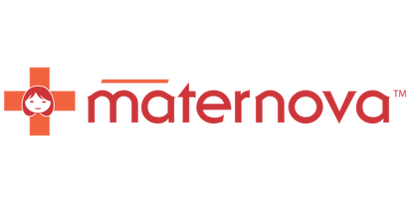Add description, images, menus and links to your mega menu
A column with no settings can be used as a spacer
Link to your collections, sales and even external links
Add up to five columns
Add description, images, menus and links to your mega menu
A column with no settings can be used as a spacer
Link to your collections, sales and even external links
Add up to five columns
The B-Lynch Suture invented by a reknowned UK obstetrician born in Sierra Leone
November 01, 2016 2 min read
Over 100,000 women die of postpartum hemorrhage (PPH) each year, accounting for 35% of all maternal deaths. An estimated 90% of these cases are caused when the uterus is unable to adequately contract after childbirth (uterine atony).
When “conservative management” using massage, pressure packing and drugs such as oxytocin or misoprostol fail to stop severe bleeding, healthcare providers must often resort to radical surgical intervention, including hysterectomy (the removal of the uterus). In addition to loss of fertility, these interventions can cause a range of complications and even death.
In attempt to avoid hysterectomy, Christopher Balogun-Lynch developed an innovative surgical technique to treat atonic PPH. Using this method, a continuous suture is used to envelop and mechanically compress the uterus. Since its invention in 1997, the B-Lynch technique has been used successfully in approximately 1,300 cases worldwide.
For example, in a review of PPH cases in Pakistan, authors favored the B-Lynch technique for its safety, simplicity, lifesaving potential and ability to preserve fertility. The suture was successful for cases of PPH after both vaginal and caesarian deliveries. As a result, the authors believe the B-Lynch suture “should be considered as a first line surgical treatment before…hysterectomy”.
In Singapore, one study indicated that out of 5,470 deliveries, 100 women experienced PPH. Only seven of these women were treated with the B-Lynch suture, successfully avoiding hysterectomy in five cases. The authors thus conclude that the B-Lynch technique is an effective procedure for managing PPH before any radical surgery is considered. “It has the advantage of being applied easily and rapidly, and should be taught to all trainees and registrars in obstetrics,” they argue.
Since 1997, several modifications of the B-Lynch method have been developed, for which there is a growing body of supportive evidence. We're curious to know how standard the teaching of the B-lynch suture is in the training of obstetrician/gynecologists and others in Africa, Asia and Latin America.
We hope it goes without saying that this is a procedure meant for surgeons! Don't try this at home!
Leave a comment
Comments will be approved before showing up.
Also in The Maternova Blog
Pumani bubble CPAP
November 11, 2025 1 min read
The Pumani bubble CPAP was engineered by a team at Rice University in Texas, working in collaboration with clinicians in Malawi. A range of specific design considerations made the Pumani especially appropriate for low-resource settings so that parts are easy to replace.
The MaternaWell Tray for PPH estimation now appears in key obstetric guidelines
October 30, 2025 1 min read
A 'tray' is now mentioned in the FIGO/WHO/ICM Consolidated Postpartum Hemorrhage Guidelines published by in 2025, expanding the type of monitoring device from drape to drape or tray.
Is it ethical to separate mother and infant just after birth?
October 28, 2025 2 min read
Immediate skin to skin care means less than ten minutes after the infant takes its first breath, the infant, naked except for a diaper, spends at least one hour on the mother’s chest, against her skin. It is recommended that preterm and low birth weight kangaroo care involve prolonging contact beyond the first hour for at least 8 hours per day or as long as possible (up to 24 hours) per day

